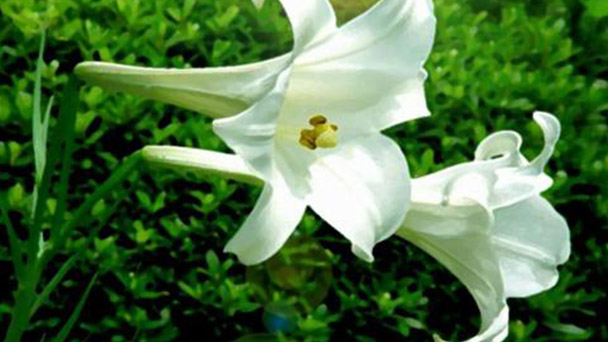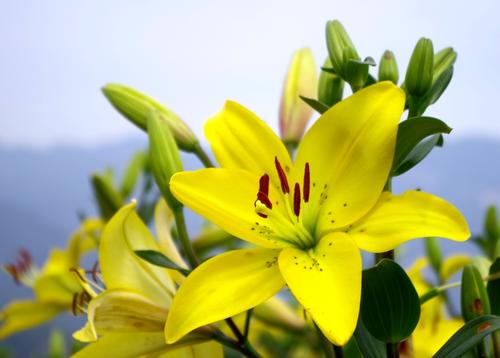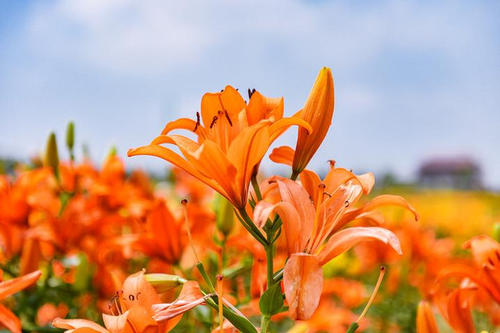Lily care guides
Written by Maggie
Jan 11 2021

Lilies have been loved by people since ancient times. Their flower beauty is extraordinary and refined, and it exudes the reserved and reserved temperament, which is very consistent with the Chinese aesthetic. So how to care for lily when we grow? Let's learn some lily care guides together.

Lily care guides for buds falling
Lily is a very beautiful flower, a lot of girls like the pure lily. But many flower friends who plant lilies found that when the lilies are in bloom, the buds of lilies fall off. What happened to the lily bud before it blossomed? How to care for lily? Because the bud is overmuch commonly, nutrition is not enough, illumination is too little. The following are lily care guides for buds falling.
1. Too many buds
Sometimes the lily bud did not blossom and fall buds because of too many buds, too dense a reason. Flowers are too much and can be too much of a good thing, the nutrient of plant and flower bud can not keep up with, and can appear some bud fall.
Solution: If too many lily buds fall off before they open, you should trim them in time. Cut out the little ones that don't have the nutrients, keep the ones that have the potential to bloom, and then add some fertilizer, and that will stop the lilies falling and start to bloom.
2. Light
The lily is a light-loving plant that likes to be in the sun when it is farmed. Especially near the flowering time, only enough light can make the lily flowers big and beautiful, bright color. But if the light is not enough, there will also be a lily bud that did not bloom on the phenomenon.
Solution: If the lily bud falls because of too little light, put the lily flower in a place where the sun can shine directly to give the lily plant full light.In this way, let the lily restore vitality as soon as possible. It will also stop falling buds.
3. Watering
Although lily is fond of light, it does not like too wet an environment. It is a plant fear of moisture. Over-watering lilies just before they bloom can cause the plant to become intolerant, which is the immediate result of buds dropping.
Solution: If lilies lose their buds because they are watered too much, they must be watered less immediately. Check to see if there is any water in the soil and drain it immediately. If the soil is just too wet, cover it with a piece of cotton cloth to absorb any excess moisture, then place the plants in a well-lit, ventilated environment and blow dry as soon as possible.

Lily care for leaves falling and buds withered
Lily blossoms in April to October each year, out of many, white, pink and yellow colors by the love of friends. But in the process of growing lily, can the symptoms of leaves and buds withered? It may be improper watering fertilizer, the temperature is too high, and we need to grasp the method of fertilizing watering. Doing a good job can return us to normal temperature control. The following are details of lily care for leaves falling and buds withered.
1. Watering method
When growing lily at ordinary times, we must pay attention to the water problem. If too much water, it can lead to water in the basin roots rotting, make lilies unable to absorb nutrients, normally lead to leaf and buds gradually wither, and even kill lilies. We also can't water too less, or make the lilies lack moisture, causes of leaf loss, and lilies may also be killed.
Solution: If the water has too much lead to wither flower buds, need to replace the soil, the careful growing lily returns to normal, and the watering needs to master the correct methods. Generally during the spring and autumn lily needs watered once every 3 ~ 5 days, watered once every other day in summer. Winter watered once every 10 days, so we can ensure that lily is not a lack of water under the condition of normal growth.
2. Apply thin fertilizer frequently
Lily need thin fat frequently applied to it, give it adequate nutrients, lily can urge the beautiful flowers, but not too much fertilizer, which will not lead to produce a large number of bacteria in the basin, lily roots to absorb nutrients, blasted the lilies of the bud. If without fertilization, it will lead to malnutrition, and can also lead to withering the flower bud.
Solution: If there is too much fertilizer, we need to use clear water to fill the root, or replace the soil, fertilization method of controlling the exactitude, and every time it should not be too much. During the spring and autumn best every half a month, a NPK fertilizer, summer needs every other month a NPK fertilizer, or organic fertilizer. It does not need fertilization in winter, so as to ensure the normal order of the lilies grow.
3. Control the temperature
Lily particularly has high temperature requirements for the environment. It is not high temperature resistant, also not resistant to cold, suitable for growing in 15 ~ 25 °C. If the temperature exceeds 30 °C, lily will cause dehydration, causing symptoms such as lily flower bud wither. The temperature should not be below 10 ℃, otherwise it will lead to frozen roots, loose leaf colour and lustre, affecting beautiful, even killed lilies.
Solution: When growing lily at ordinary times, we must control the temperature, every arrival of the summer, lily will need to move to the astigmatism, around the area and sprayed with water, or directly spraying water on the leaves, buds, to prevent overheating. During the winter, we need to control the temperature of 15 ~ 20 ℃, which can help the lilies grow.

Latest Updated
- Benefits of Bugleweed - 7 Science-backed Health Benefits
- Bugleweed Dangers & Side Effects - Is It Poisonous?
- How to Plant Evergreen Trees - What You Should Know
- When to Plant Evergreens - Grow Guide for Evergreen Trees
- 12 Wonderful Evergreen Shrubs for Your Garden
- 12 Popular Evergreen Plants with Pictures for Beginners
- When And How To Prune A Lilac Bush Like a Pro
- How to Grow & Care for Lilac Vine (Hardenbergia Violacea)
- Japanese Lilac Tree (Syringa Reticulata) Care & Propagation Guide
- Shumard Oak Pros and Cons - What to Know
Popular Articles
- Winter maintenance of Antirrhinum Majus
- How to Grow Terminalia Mantaly Tree
- How to Grow and Care for Crossostephium Chinense
- How to grow Antirrhinum Majus in spring
- Peristeria Elata (Dove Orchid) Profile: Info & Care Guide
- Underwatered Snake Plant (Sansevieria Trifasciata) - Signs And How To Fix
- How to Care for Brazilian Jasmine Plant (Mandevilla Sanderi)
- How to Grow & Care for Graptopetalum Purple Delight in Summer
- Rosa Chinensis (China Rose): Plant Growing & Care Tips
- How to Care for Baby Sun Rose (Aptenia Cordifolia)